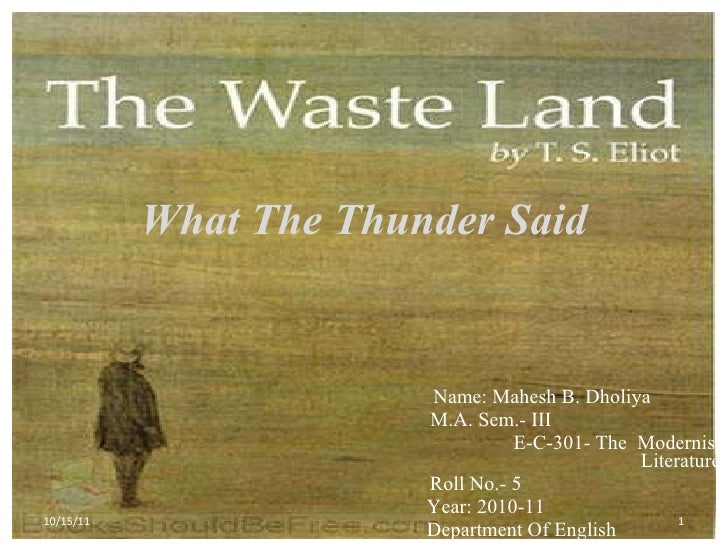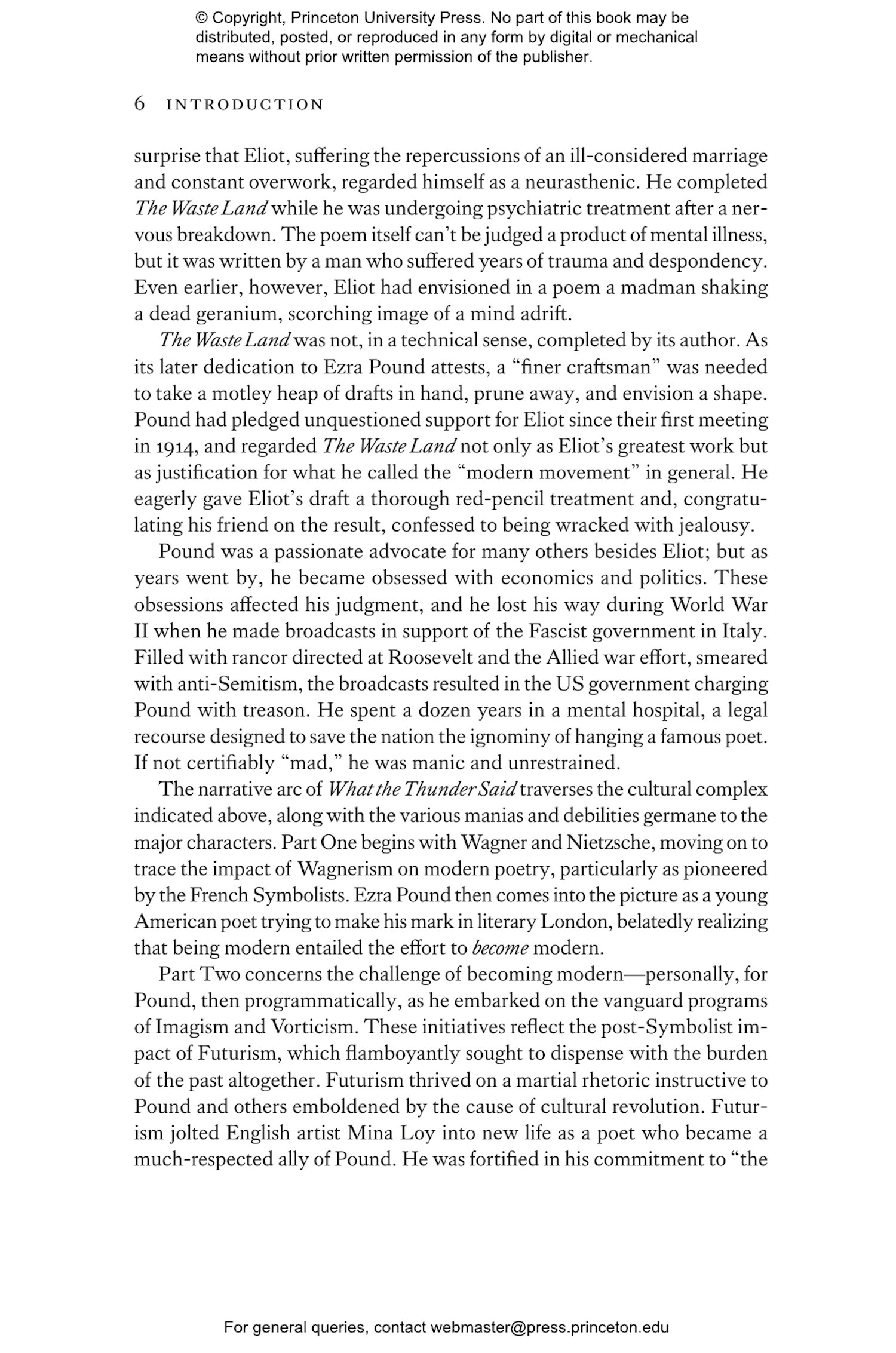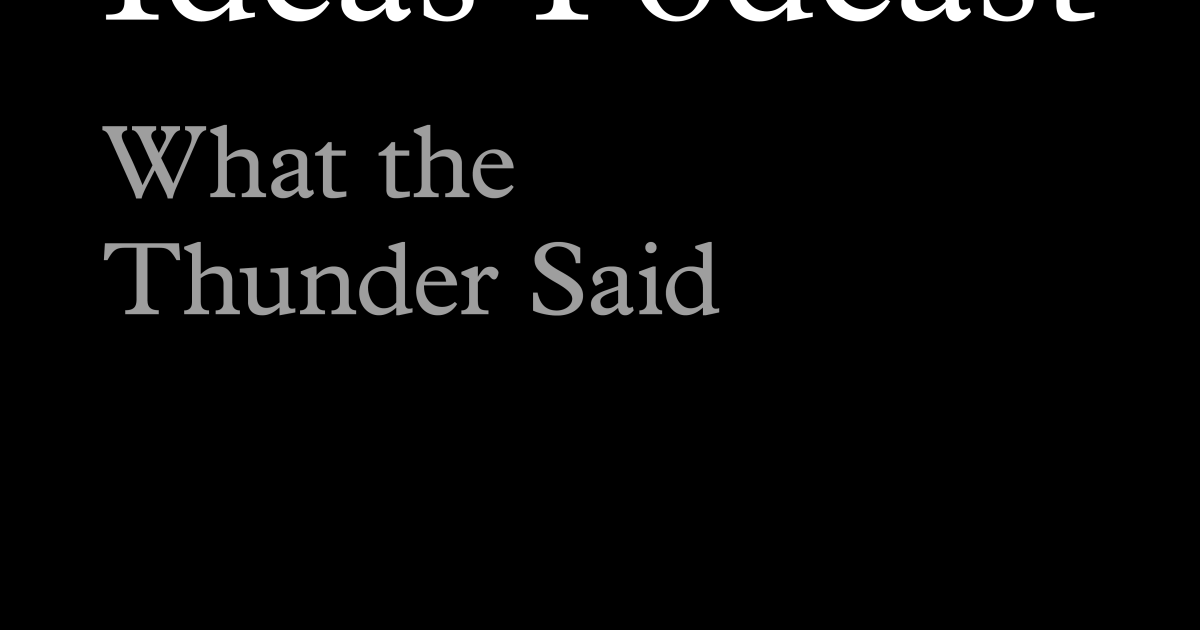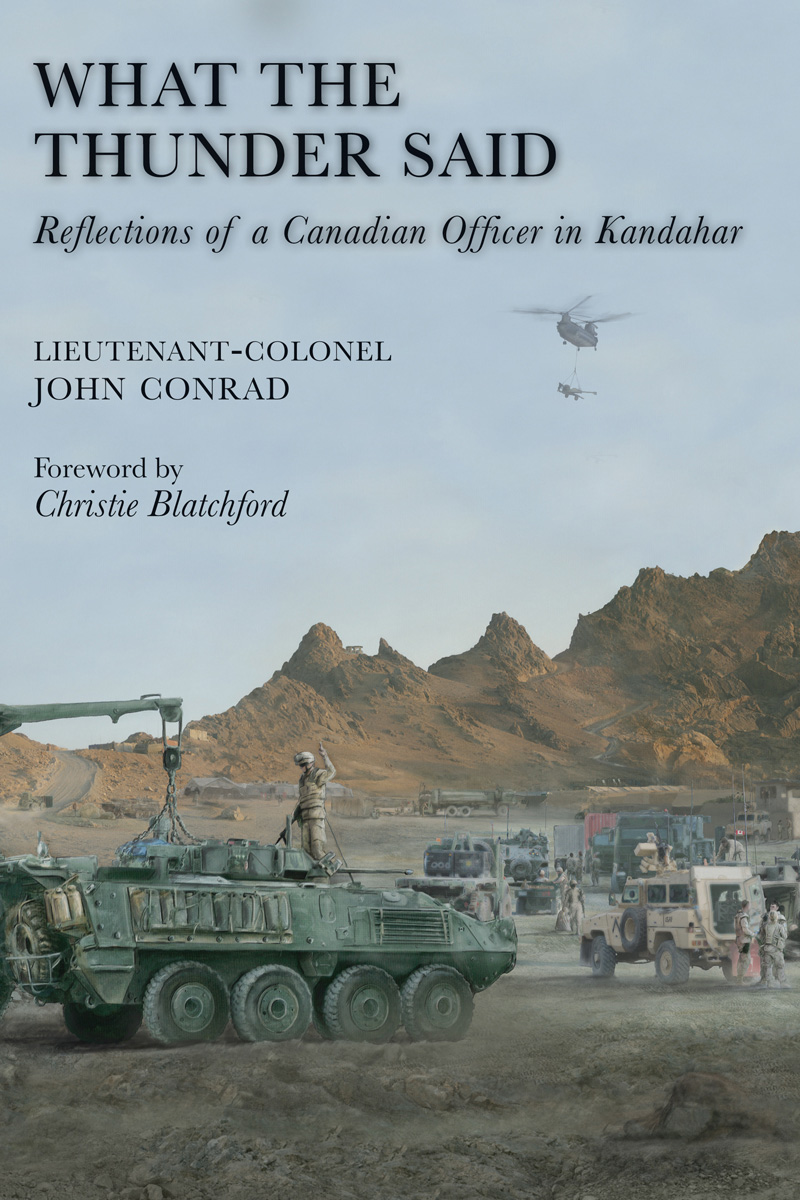
What the thunder said TheArticle
What the Thunder Said [ 41] After the torchlight red on sweaty faces. After the frosty silence in the gardens. After the agony in stony places. The shouting and the crying. Prison and palace and reverberation. Of thunder of spring over distant mountains. He who was living is now dead. We who were living are now dying.

What The Thunder Said
T. S. Eliot Study Guide Flashcards PLUS Summary & Analysis Summary The Waste Land Section V: "What the Thunder Said" Summary The final section of The Waste Land is dramatic in both its imagery and its events.

What the Thunder Said Princeton University Press
The Waste Land What the Thunder Said | Shmoop The Waste Land What the Thunder Said Back What the Thunder Said Lines 322-330 After the torchlight red on sweaty faces After the frosty silence in the gardens After the agony in stony places The shouting and the crying Prison and palace and reverberation Of thunder of spring over distant mountains

What the Thunder Said (2016)
Overview Author (s) Praise When T. S. Eliot published The Waste Land in 1922, it put the thirty-four-year-old author on a path to worldwide fame and the Nobel Prize. "But," as Jed Rasula writes, " The Waste Land is not only a poem: it names an event, like a tornado or an earthquake. Its publication was a watershed, marking a before and after.

SyFy's Aftermath S1E07 "What the Thunder Said" (7 Pics) NerdSpan
Death in life/living death. From the poem's epigraph onwards, the idea of a living death is established as one of the key themes of The Waste Land. The epigraph is from Petronius' scurrilous Roman novel, Satyricon. The speaker sees the Sibyl at Cumae hanging in a cage or bottle, and when he asks her what she wants, the Sibyl replies, 'I.

What the Thunder said by T.S. Eliot The Waste Land Section 5 YouTube
A Short Analysis of T. S. Eliot's 'What the Thunder Said' A reading of the fifth section of The Waste Land - analysed by Dr Oliver Tearle 'What the Thunder Said' concludes The Waste Land, T. S. Eliot's landmark 1922 work of modernist poetry. In many ways, this is the most difficult section of The Waste Land to analyse.

What The Thunder Said by T.S Eliot Summary & Analysis
What the Thunder Said. This is the final part of the 'Wasteland' and therefore, despite destruction and there is the emergence of images of hope and salvation through the arrival of water. The structure remains fragmented and irregular thereby depicting the fragmentation of society. Eliot emphasises the chaos and disorganisation of society.

What The Thunder Said
What the Thunder Said: How The Waste Land Made Poetry Modern (Introduction) | Academy of American Poets What the Thunder Said: How The Waste Land Made Poetry Modern (Introduction) By the time T. S. Eliot 's poem The Waste Land entered public domain in the United States in 1998, it had been a staple of higher education for half a century.

What the Thunder Said Sayings, Words, Ts eliot
V. What the Thunder Said Edit Chapter Summary "What the Thunder Said" is set in various places. The first three stanzas are set in a desolate and deserted place where it resembles a true waste land, emphasizing the dire need of society for salvation. "Falling towers" and "unreal cities" indicates the destruction and corruption within society.

Ideas Podcast What the Thunder Said Princeton University Press
Quick answer: The terms "Datta, Dayadhvam, Damyata" in the section of The Waste Land entitled "What the Thunder Said" signify a possible way of escaping from the malaise of the fractured.

What the Thunder Said Dundurn
5. What the Thunder Said - by T. S. Eliot V. WHAT THE THUNDER SAID After the torchlight red on sweaty faces After the frosty silence in the gardens After the agony in stony places The shouting and the crying Prison and palace and reverberation Of thunder of spring over distant mountains He who was living is now dead We who were living are now dying

What The Thunder Said One Yellow Rabbit
What the Thunder Said. 322 After the torchlight red on sweaty faces. 323 After the frosty silence in the gardens. 324 After the agony in stony places. 325 The shouting and the crying. 326 Prison and palace and reverberation. 327 Of thunder of spring over distant mountains. 328 He who was living is now dead.

WHAT THE THUNDER SAID LIMITED EDITION PRINT Claire Gill Fine Art
I. The Burial of the Dead April is the cruellest month, breeding Lilacs out of the dead land, mixing Memory and desire, stirring Dull roots with spring rain. Winter kept us warm, covering Earth in forgetful snow, feeding A little life with dried tubers. Summer surprised us, coming over the Starnbergersee

Thunder Said Phase Change Materials Review
What the Thunder Said traces the origins, reception, and enduring influence of the poem, from its roots in Wagnerism and French Symbolism to the way its strangely beguiling music continues to inspire readers. Along the way, we learn about Eliot's storied circle, including Wyndham Lewis, Virginia Woolf, and Bertrand Russell, and about poets like.

What the Thunder Said Vol. 9
Welcome to What the Thunder Said, a site devoted to the works and life of T.S. Eliot. Whether you are a casual reader or a devoted lover, it is our hope that this site can bring you closer to the man and his works. Any questions or suggestions may be sent to the creator, Raymond Camden. The last update was on January 1, 2021.

A Short Analysis of T. S. Eliot's 'What the Thunder Said' Interesting
V. What the Thunder said After the torchlight red on sweaty faces After the frosty silence in the gardens After the agony in stony places The shouting and the crying Prison and palace and reverberation Of thunder of spring over distant mountains He who was living is now dead We who were living are now dying With a little patience